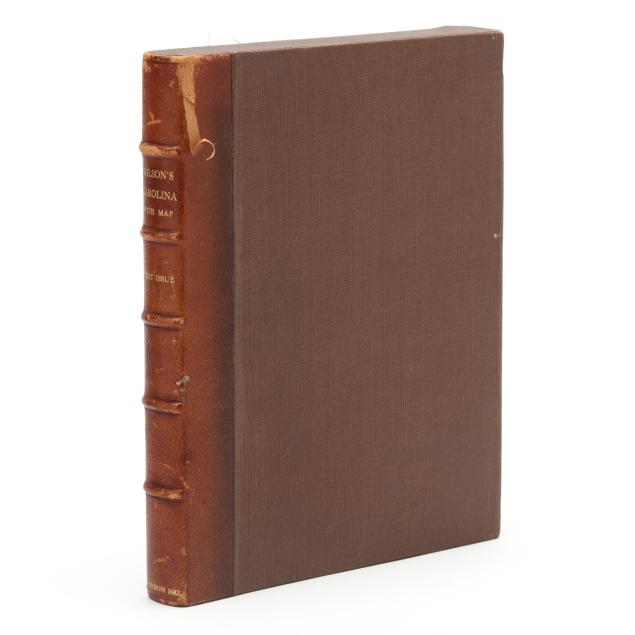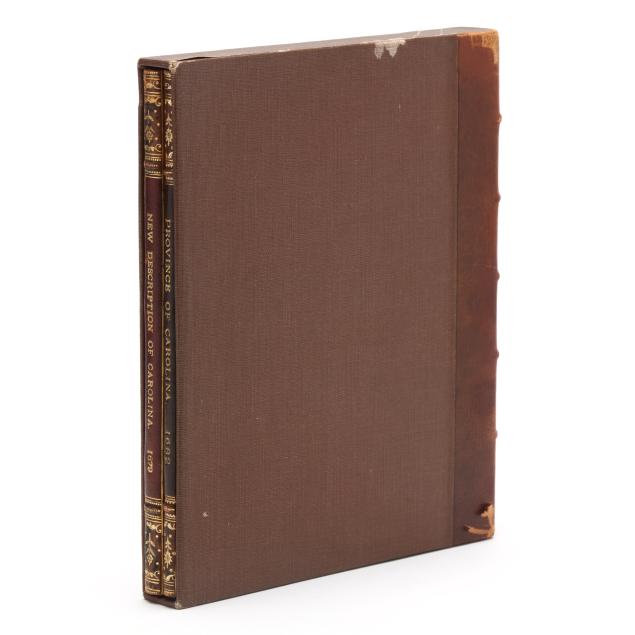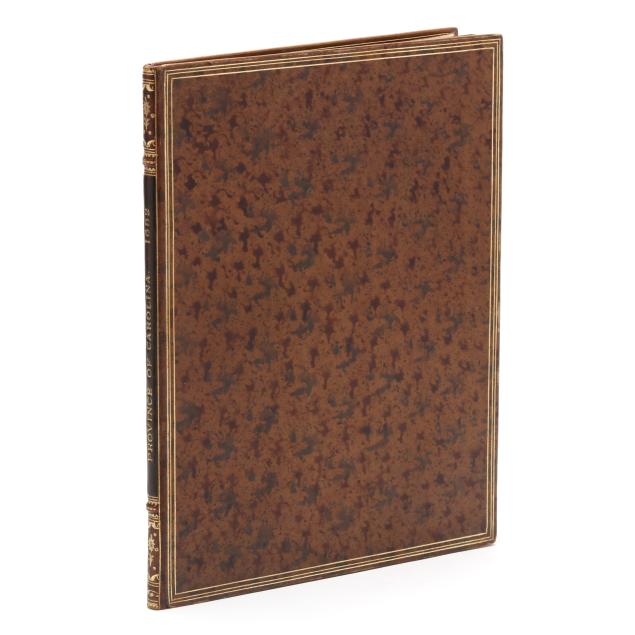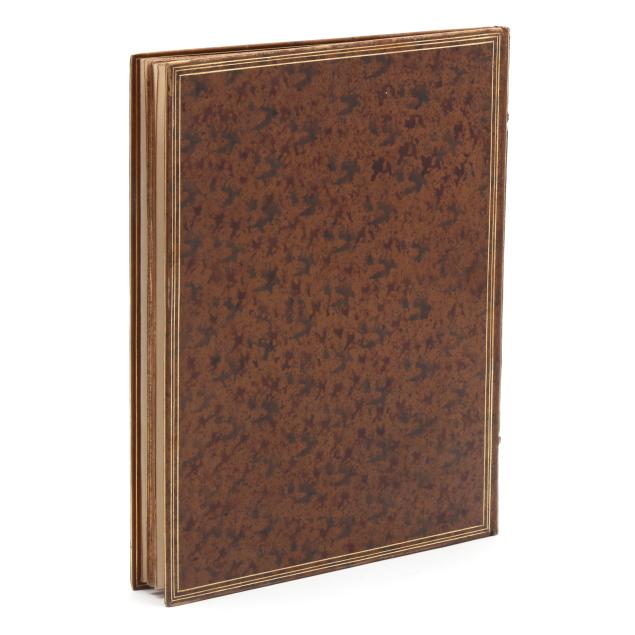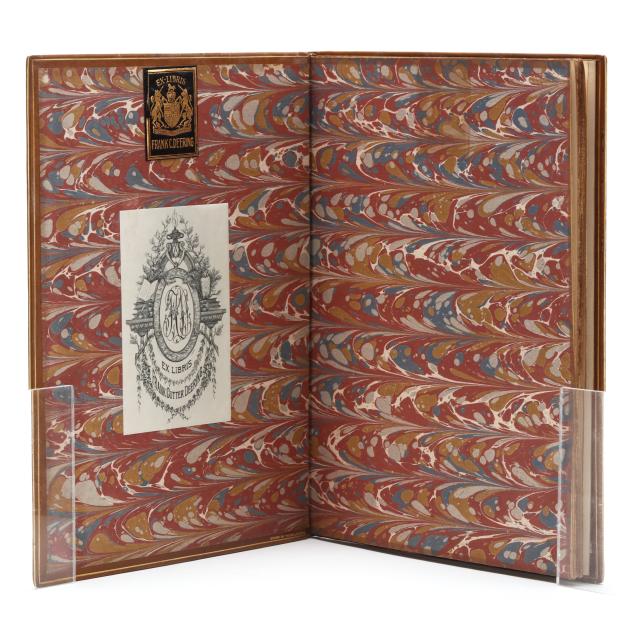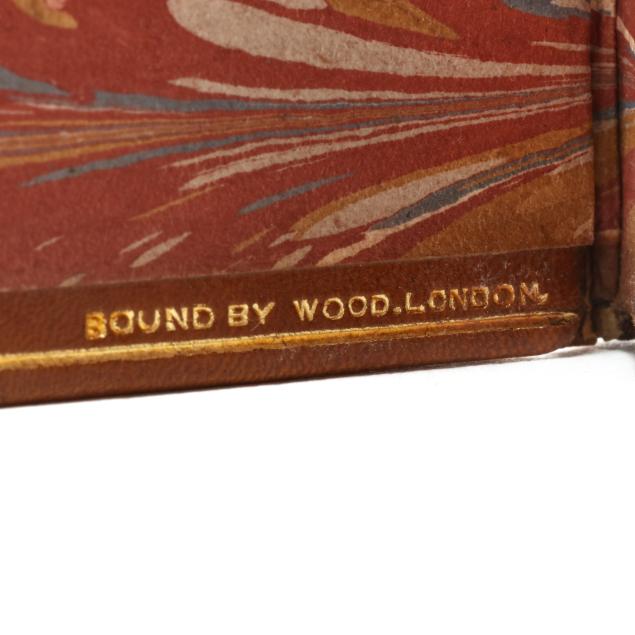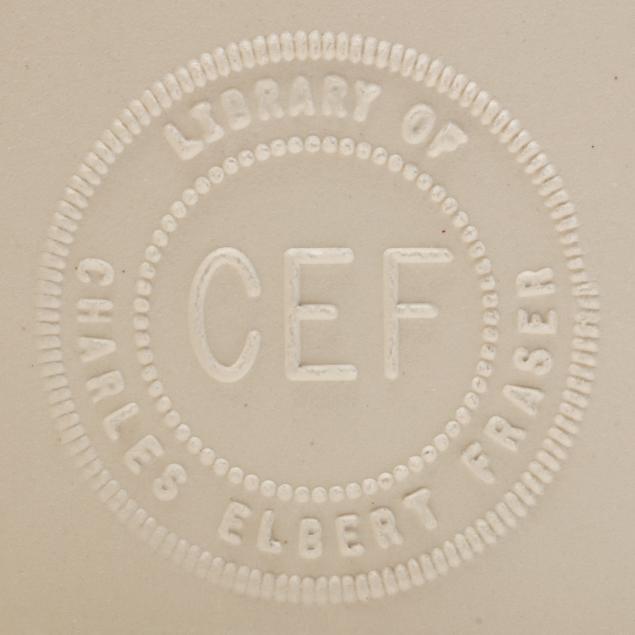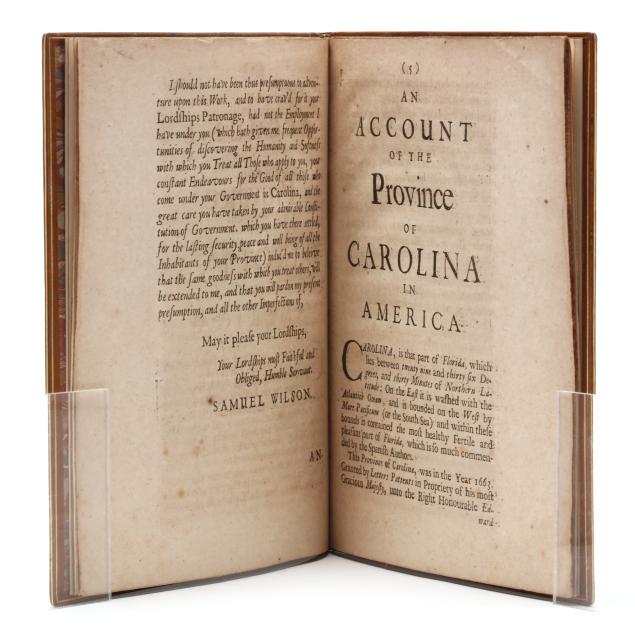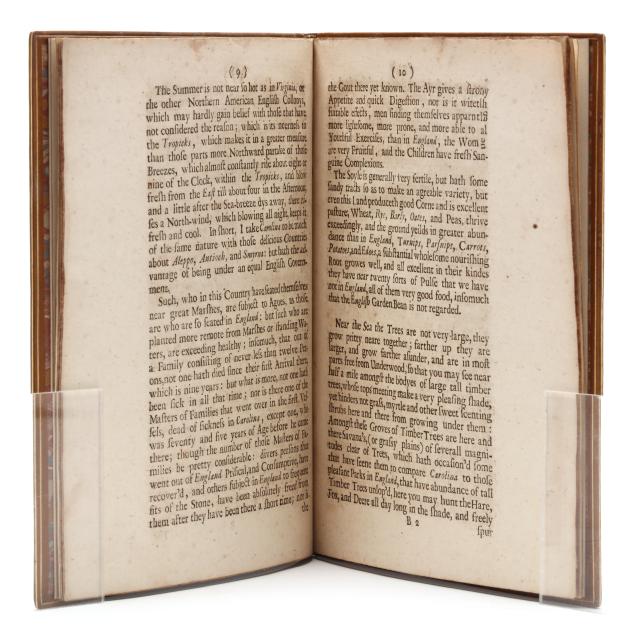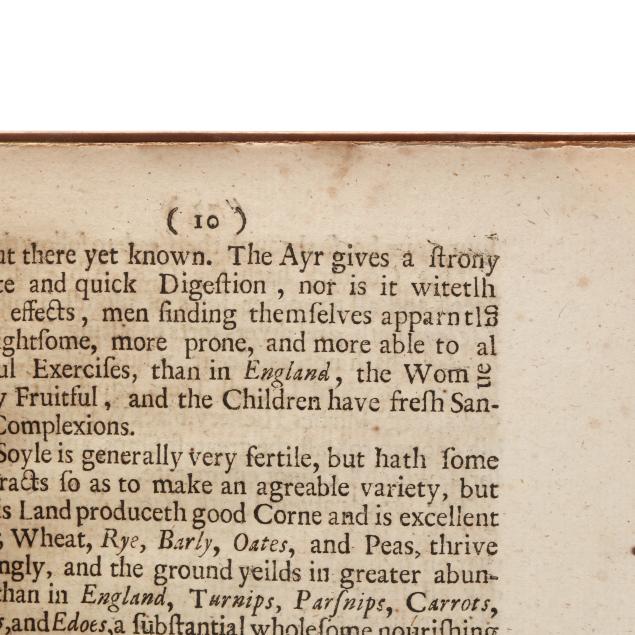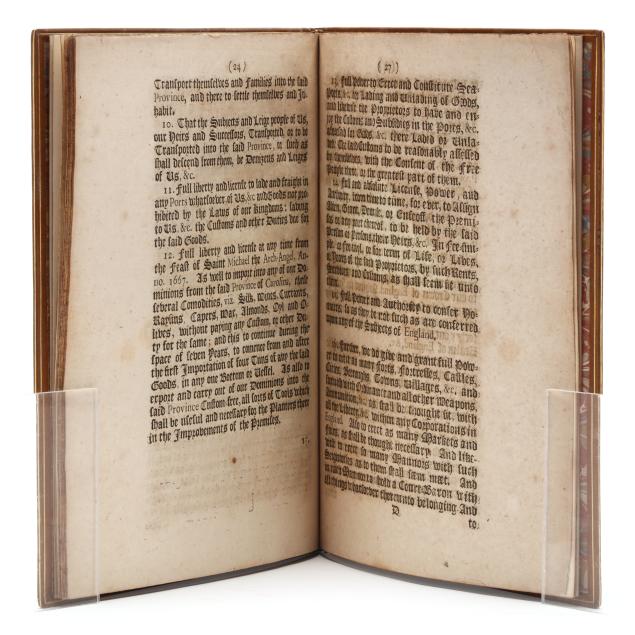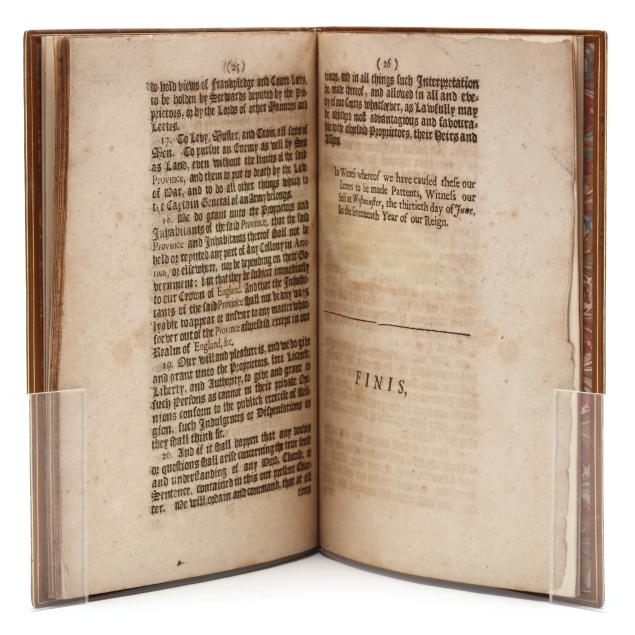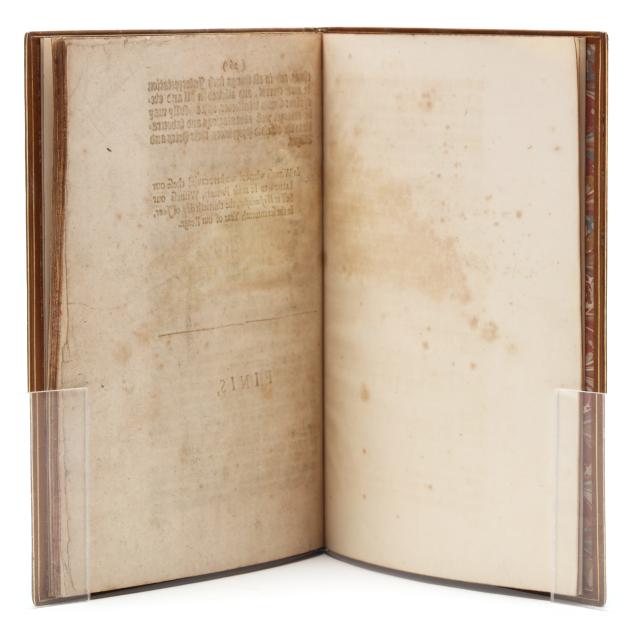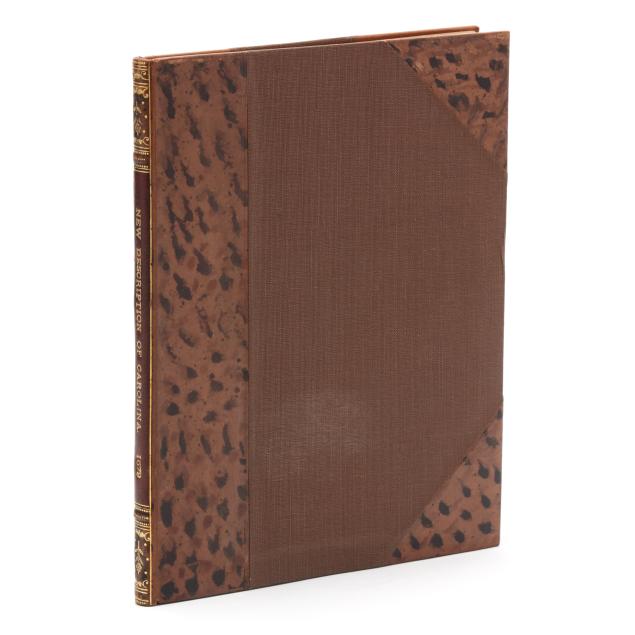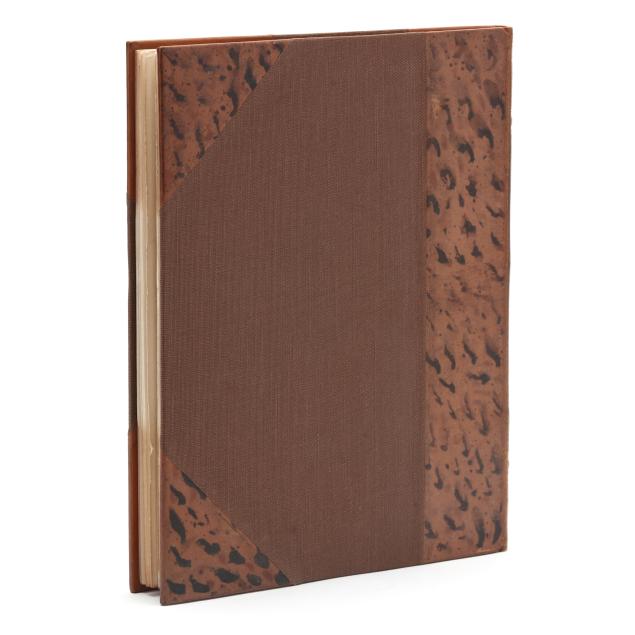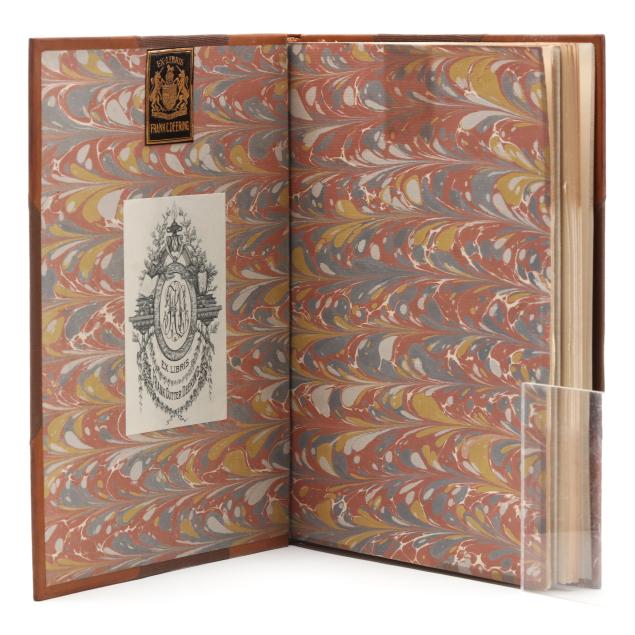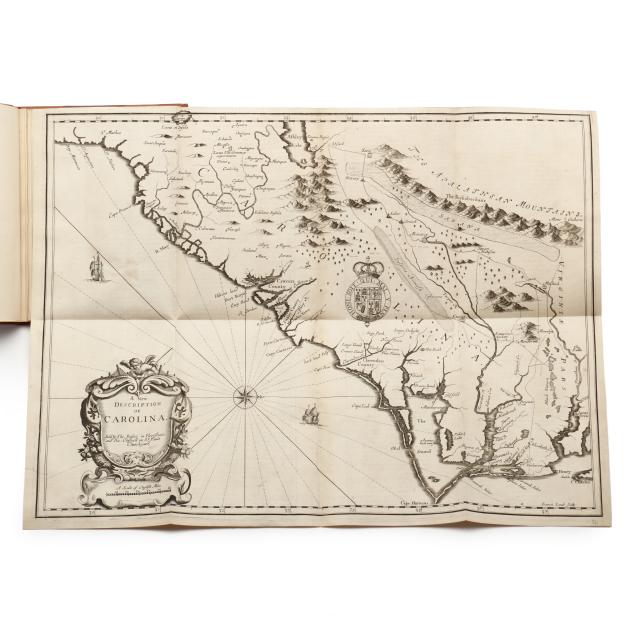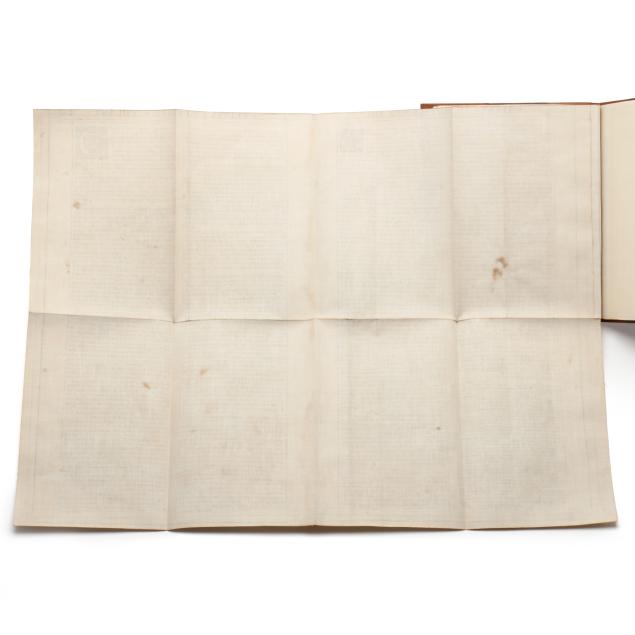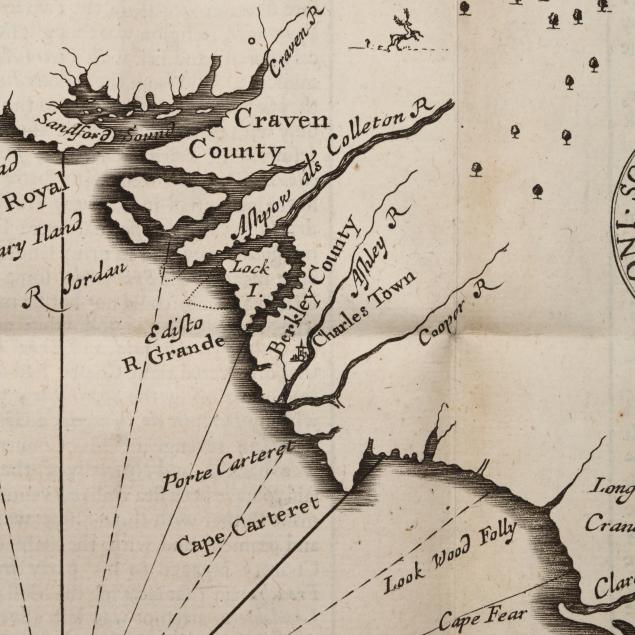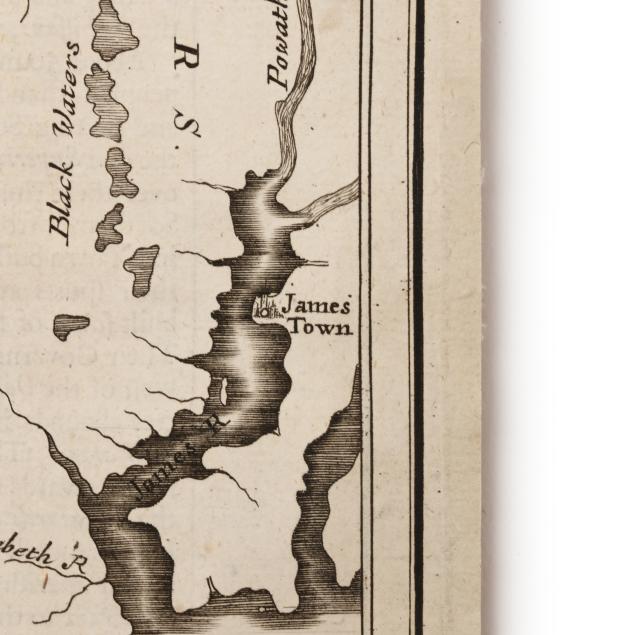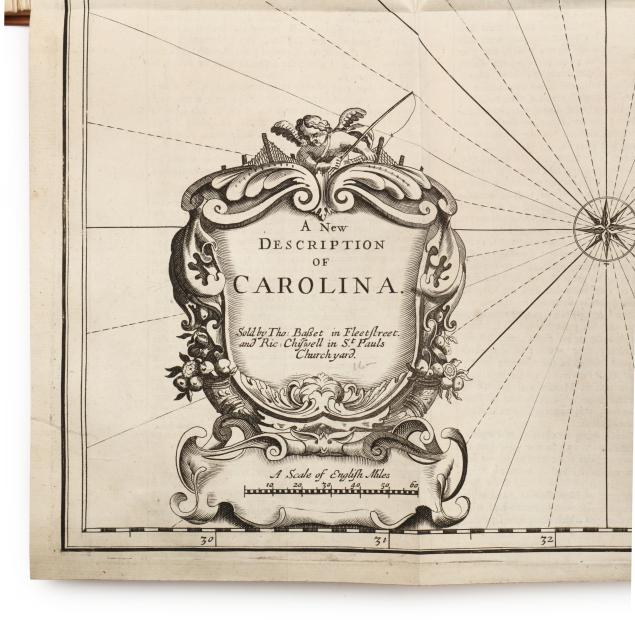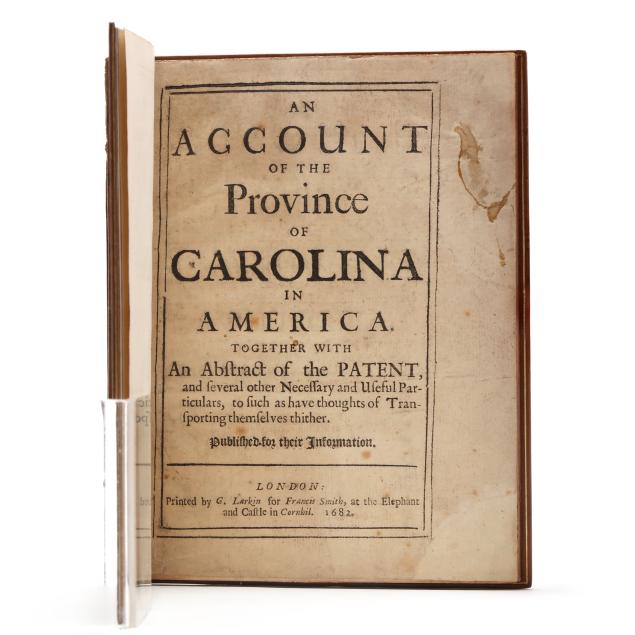
Lot 4023
Scarce First Issue of An Account of the Province of Carolina in America, Finely Bound and With Celebrated John Speed Map
Explore more items like this one.
Visit our Historical Department Historical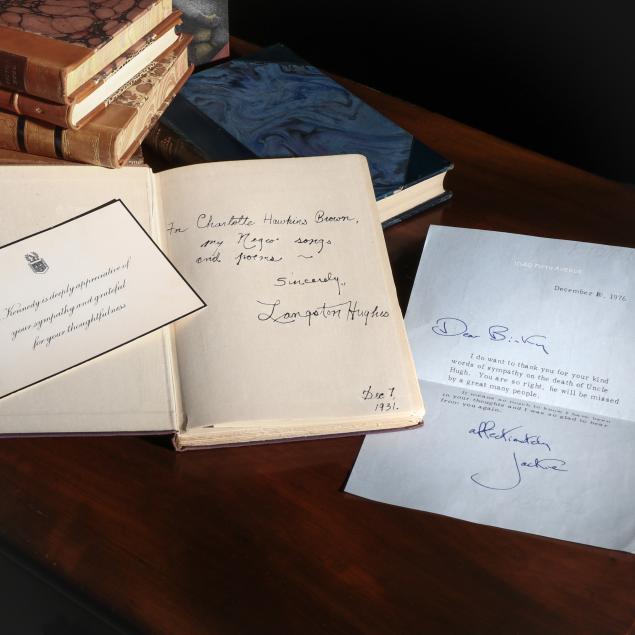
Lot Details & Additional Photographs
With John Speed's A NEW DESCRIPTION OF CAROLINA. [London]: Sold by Tho: Basset in Fleetstreet. and Ric: Chiswell in St. Pauls Churchyard, [1676]. Copper plate engraving by Francis Lamb, not colored. From "Prospect of the most Famous Parts of the World," an addendum in John Speed's The Theatre of the Empire of Great Britain (London, 1676). Presenting the Southeast, with Virginia to the right with "James Town," the Appalachian Mountains in the top right, an early inclusion of "Charles Town" towards the center of the map, and down to St. Augustine, Florida in the top left corner; with a large decorative title cartouche in the lower left corner and royal arms in the center; verso with "Description of Carolina" and "Description of Florida." Map backed with cloth and now bound in three-quarter mottled calf over brown-cloth covered boards, spine gilt-stamped and with brown leather at the center, top edge gilt, with marbled endpapers; bound with additional blank leaves. According to Church, this map usually accompanies the second issue of the book (p. 1508).
Howes W535; Sabin 104685; Church 677; Sabin 89228; Cumming 77.
Each volume 7 7/8 x 6 1/4 in.; DOA 8 1/8 X 6 3/4 in.
From the Estate of Charles E. and Mary Fraser, Hilton Head Island, South Carolina
Each volume with bookplates of the Americana collector Frank Cutter Deering and stamped "Library of Charles Elbert Fraser." Charles E. Fraser was a well-known developer of South Carolina’s Hilton Head Island. He designed and built numerous residential communities and resorts, and started the first PGA-level tournament on the island.
The "Province of Carolina," which included all of the territory between Virginia and Florida, was created in 1663 when King Charles II gave control of the area to a small group known as the Lords Proprietors. When growth of the colony was slow, settlement was promoted through pamphlets, including An Account of the Province of Carolina, written by Samuel Wilson who served as the assistant to the Lords Proprietors. In his account, Wilson discusses the many favorable aspects of the area, such as the weather ("nor is the Winter here Cloudy, Overcast, or Foggy...and though Rains fall pretty often in the Winter, it is most commonly in quick Showers..."), the land ("and the ground yeilds [sic.] in greater abundance than in England..."), the health of the livestock ("Hogs increase in Carolina abundantly..."), and much more. Wilson also discusses the land that settlers will receive from the Lords Proprietors when they arrive in the colony and notes the items they should bring with them. Howes calls the book a "Glowing account of South Carolina as an emigrant's paradise" (p. 638).
Book boards with light wear to extremities; offsetting on free endpapers; interior with toning, scattered foxing, and expected occasional edge wear or corner fold; title page with faint writing, 1/2-in. tear at lower margin, professional corner repair, grime, and one area of staining and glue repair; a few leaves with minor damp staining at outer margin, and one page with pencil marks. Boards of map volume with mild handling wear and rubbing; folding map now backed with cloth, with light grime, a couple of minor foxing spots, areas of light browning with some likely from adhesive used for backing, a few additional mostly faint folds and creases, one 7/8-in. professional repair starting at outer margin, and spotting to cloth on verso; endpapers and bound blank leaves with occasional minor offsetting, toning, and edge wear. Slipcase with light rubbing and fraying, and peeling to leather. Very good and finely bound examples of this important pamphlet and map.
